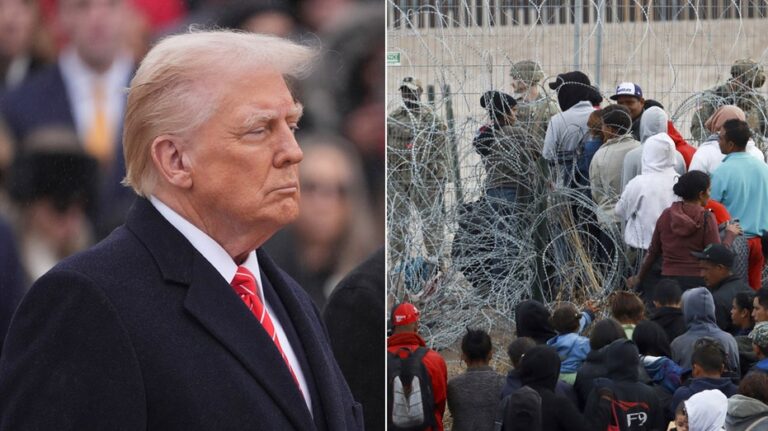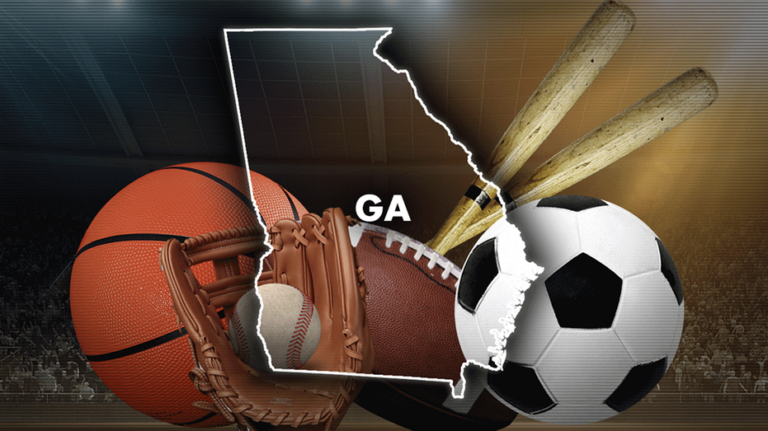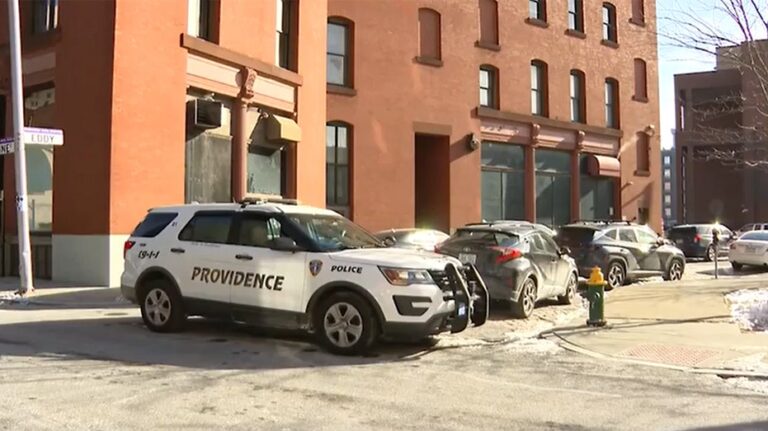
After an unprecedented four years in politics, voters are evenly divided on who should next lead the free world.
Former President Donald Trump is one state closer to a stunning comeback in this week’s Fox News Power Rankings; the final forecast before the election.
But Trump and Vice President Kamala Harris both have pathways to victory, and among many scenarios, it is plausible that Democrats win by a single electoral vote.
Americans feel overwhelmed at the end of this presidential cycle. They have grappled with rising prices, illegal immigration, abortion laws, two global conflicts and the sudden departure of an incumbent from the presidential race.
Meanwhile, Trump faced indictments over Jan. 6 and storing classified documents, crushed more than a dozen rivals after reentering the presidential race, and survived two assassination attempts.
Through it all, the former president has kept an unbreakable bond with his voters. For more than a year, Trump has received support from between 48% to 50% of voters in the Fox News Poll, while support for the Democratic candidate has been more elastic.
Now, as the final week of the campaign begins, this electorate is locked in. Polls show a tight national race and curiously, the battleground states are just as close.
This weekend, Harris spoke at a rally with Michelle Obama in Michigan with a sharply negative message about Trump and women’s health.
The tone stood in contrast to previous appearances by the first lady and is a sign that the campaign feels the race is close, or even that they are behind.
On Sunday, the vice president went to Philadelphia. There are more voters here than any other city in battleground Pennsylvania and combined, Black and Hispanic people make up the majority of its population.
Those voters remain a weakness of Harris’ new coalition.
FOX NEWS POWER RANKINGS: VOTER OUTREACH, BALLOT EFFICIENCY AND A LITTLE HOUSEKEEPING
Harris’ visit to a Puerto Rican restaurant the same day, however, proved to be more helpful than the campaign could have expected.
Later that night, Trump made his closing arguments at Madison Square Garden.
The event was visually powerful. Some Republicans on the fence about “MAGA” who saw throngs of supporters in red hats in Manhattan could have been persuaded that the movement is more popular and inclusive than before.
But the program gave Democrats new attack lines about Trump and his allies’ dark rhetoric, and included jokes from an insult comedian about Puerto Rican, Latino, and Jewish people. The Trump campaign distanced itself from the remarks Monday, telling Fox News the joke “does not reflect the views of President Trump or the campaign.”
These moments are not quite the strategic mistakes that some observers believe them to be. Trump has a long record of comments like these, and they help drive his supporters to the polls. But there is a large Puerto Rican community in Pennsylvania, where the margins will matter.
5 NUMBERS THAT WILL DECIDE THE 2024 PRESIDENTIAL ELECTION
The rally was a bow to the campaign’s full-throated effort to turn out young males, including low-propensity voters. This could be the bloc that gets Trump over the line on November 5.
But last week, there were rumblings that this could be a reunion with Nikki Haley to play for the 20% of higher-propensity, non-MAGA Republicans who say they will vote for Harris in November. This event was not that.
The former president remains very well-positioned on two of the top three issues.
The economy is by far and consistently the most important issue in deciding voters’ ballots. Voters say Trump will better handle the issue by 7 points. He is even more heavily favored on immigration at 15 points. The strength reverses for abortion, where voters favor Harris by 13 points.
The issues polling looks less lopsided further down the list, though still with a Trump advantage. Harris leads on health care, climate change and election integrity, while Trump is ahead on Israel, crime, and guns.
Fox’s latest survey also asked voters which issue was motivating them to vote. 12% said the economy, but 11% chose candidate character and values, and 10% said protecting democracy, rights, and freedoms would get them to the polls.
The presidential race is a toss-up. Neither Harris nor Trump have the 270 electoral votes required to win the race. They need to win the right combination of six toss-up states worth a total 82 electoral votes to bring it home.
Surveys show races within the margin-of-error in all the battleground states, but when looked at together, the polling in Arizona tells a different story.
In eight high-quality polls conducted in this state since August, Trump has been ahead in seven. His edge has been between 1-6 points.
That advantage does not exist for Harris or Trump in any other battleground state.
Immigration continues to be a highly important issue in Arizona, which shares a border with Mexico.
In the latest Wall Street Journal survey, 25% of voters said immigration was the most important issue to their vote, higher than any other battleground. It was a “deal-breaker” issue for 24% of voters. And Arizona voters preferred Trump on the issue by 10 points.
Trump allies do not appear to be a drag. Republican Senate candidate Kari Lake is less popular with voters despite their shared policies and traits (her Senate race remains Lean D). But the level of ticket-splitting is high and has endured throughout the campaign.
This is still a highly competitive race. If Trump loses, it will be because of suburban growth and non-MAGA Republican voters, who are a strong faction. There is also an abortion measure on the ballot.
But the statewide polling has been directionally consistent and immigration reigns supreme.
Arizona moves from Toss Up to Lean R.
(Fox News Power Rankings are nonpartisan pre-election predictions. Each ranking is informed by data, reporting, and analysis.)
Battleground states have been won and lost together in recent elections. Trump won the bulk of them in 2016; Biden flipped them back four years later.
There are signs that the Democratic campaign is pursuing a path-of-least-resistance where they eke out a victory with half of those states.
Harris and Walz’s schedules this week focus on Michigan, Pennsylvania, and Wisconsin. These states account for about 60% of their time, the campaign’s most precious resource. Both nominees are visiting all three.
(In deep blue DC, Harris will highlight Trump’s efforts to overturn the results of the last election in a speech on the Ellipsis.)
Democrats have also spent about 60% of their battleground advertising budgets in the same states; over $460 million.
This suggests that the campaign is targeting wins in these states and Nebraska’s 2nd district, plus all the less competitive races Biden won last time.
That would land them on 270 electoral votes, the minimum number required to win.
This is one of many scenarios. But as the Harris campaign struggles to pull ahead, it is a very plausible one.
There are 10 states that will likely remain in party hands but remain competitive in the final stretch.
For Republicans, the first opportunity on a great night would be Virginia, where a Washington Post poll shows Harris up by six points, 49%-43%.
Republicans are poised to flip the Senate with at least 51 seats, beginning with an all-but-certain win in West Virginia, followed by Montana, where they have an edge. The next best opportunity is in Ohio, which is still a toss-up.
Michigan, Pennsylvania, and Wisconsin all move from Lean D and join the toss-up category this week.
Republicans have been chipping away at their opponents’ leads in these states since the campaigns heated up, and polling now shows races within the margin-of-error.
All three Democratic candidates are still over-performing the top of the ticket by a point or two, and the campaigns are clearly aware: they have all promoted their work with Trump on bipartisan bills in new television ads.
The GOP is unlikely to pick off all three of these seats, but any would be gravy on top of a likely majority flip.
Meanwhile, Republicans have been slow to respond to independent candidate Dan Osborn’s campaign in Nebraska. Incumbent GOP Sen. Deb Fischer has won twice before, but Osborn, a Navy veteran and local union leader, is now a serious threat.
A new poll from the New York Times/Siena finds 46% of voters backing Osborn and 48% with Fischer; shockingly close for a conservative state. That is after GOP groups began telling voters that Osborn is a “Bernie Democrat.”
This Nebraska Senate race moves from Likely R to Lean R.
The Senate could have other surprises in store, including Florida, where incumbent GOP Sen. Rick Scott continues to pour money into the race, and Texas, where Republican Sen. Ted Cruz is fighting for another term against Democratic Rep. Colin Allred. Both these races are still Likely R.
The House is still a toss-up.
Beneath the surface, the battle for the gavel is getting more expensive. House candidates have spent more than $3 billion on their races so far, concentrated in roughly 40 battleground districts.
Democrats have raised and spent nearly twice as much as Republicans, and that is an important factor in Pennsylvania’s 7th district.
Biden won this eastern district by less than a point in 2020 and it includes Northampton County, which had the narrowest margin of any in the state that year.
Incumbent Democratic Rep. Susan Wild is financially dominant, with $7.5 million in campaign spending this cycle to GOP rival and state Rep. Ryan Mackenzie’s $1.2 million. The district moves from Toss Up to Lean D.
Money is also a big part of the story in Illinois’ 17th district and Indiana’s 1st district. Democratic incumbents in these races have spent at least three times as much as their Republican opponents. These seats move from Lean D to Likely D.
The cash is flowing in Arizona’s 2nd district too. Incumbent GOP Rep. Eli Crane faces a challenge from Democrat and former President of the Navajo Nation Jonathan Nez in this disproportionately Native American district.
Nez has dropped $3.7 million on the race and is focusing on his work with Trump on water access. Crane, meanwhile, is highlighting the border. The 2nd district moves from Solid R to Likely R.
Virginia’s 7th district is more competitive than ever. Democrats have fielded Eugene Vindman, a Navy veteran, while Republicans are looking for a flip with attorney Derrick Anderson.
The campaign has been marked by mini-scandals on both sides, but Vindman does not have the strong centrist brand that retiring Democrat Abigail Spanberger built. This district moves from Lean D to Toss Up.
So far, there have only been three competitive governor’s races on the map and New Hampshire is the one to watch.
In Indiana, Republican gubernatorial candidate Sen. Mike Braun should have been able to cruise to victory against any Democratic opponent.
But Braun’s hardline position on abortion has given Democrat Jennifer McCormick an opening. The state enacted a near total ban on abortion two years ago, which McCormick argues is too extreme. Braun maintains that Indiana should be a “right-to-life state.”
There are also unusual partisan dynamics at play. The GOP’s candidate for lieutenant governor could impact support for the Republican ticket among moderates, and there is a Libertarian on the ballot.
Indiana’s governor race moves from Solid R to Likely R.
No matter who reaches 270 votes next week, the winner will be the American people.
The United States is not the only democracy, but it is the most powerful. Estimates suggest that at least 160 million voters will cast a ballot by Election Day.
They will have the remarkable power to choose the leader of the free world and the direction of the country.
Fox News’ Democracy ’24 special coverage with Bret Baier and Martha MacCallum begins next Tuesday at 6 p.m. ET from New York City.
Coverage will include the latest race calls from the Fox News Decision Desk and results from the Fox News Voter Analysis.
After an unprecedented four years in politics, voters are evenly divided on who should next lead the free world.
Former President Donald Trump is one state closer to a stunning comeback in this week’s Fox News Power Rankings; the final forecast before the election.
But Trump and Vice President Kamala Harris both have pathways to victory, and among many scenarios, it is plausible that Democrats win by a single electoral vote.
Americans feel overwhelmed at the end of this presidential cycle. They have grappled with rising prices, illegal immigration, abortion laws, two global conflicts and the sudden departure of an incumbent from the presidential race.
Meanwhile, Trump faced indictments over Jan. 6 and storing classified documents, crushed more than a dozen rivals after reentering the presidential race, and survived two assassination attempts.
Through it all, the former president has kept an unbreakable bond with his voters. For more than a year, Trump has received support from between 48% to 50% of voters in the Fox News Poll, while support for the Democratic candidate has been more elastic.
Now, as the final week of the campaign begins, this electorate is locked in. Polls show a tight national race and curiously, the battleground states are just as close.
This weekend, Harris spoke at a rally with Michelle Obama in Michigan with a sharply negative message about Trump and women’s health.
The tone stood in contrast to previous appearances by the first lady and is a sign that the campaign feels the race is close, or even that they are behind.
On Sunday, the vice president went to Philadelphia. There are more voters here than any other city in battleground Pennsylvania and combined, Black and Hispanic people make up the majority of its population.
Those voters remain a weakness of Harris’ new coalition.
FOX NEWS POWER RANKINGS: VOTER OUTREACH, BALLOT EFFICIENCY AND A LITTLE HOUSEKEEPING
Harris’ visit to a Puerto Rican restaurant the same day, however, proved to be more helpful than the campaign could have expected.
Later that night, Trump made his closing arguments at Madison Square Garden.
The event was visually powerful. Some Republicans on the fence about “MAGA” who saw throngs of supporters in red hats in Manhattan could have been persuaded that the movement is more popular and inclusive than before.
But the program gave Democrats new attack lines about Trump and his allies’ dark rhetoric, and included jokes from an insult comedian about Puerto Rican, Latino, and Jewish people. The Trump campaign distanced itself from the remarks Monday, telling Fox News the joke “does not reflect the views of President Trump or the campaign.”
These moments are not quite the strategic mistakes that some observers believe them to be. Trump has a long record of comments like these, and they help drive his supporters to the polls. But there is a large Puerto Rican community in Pennsylvania, where the margins will matter.
5 NUMBERS THAT WILL DECIDE THE 2024 PRESIDENTIAL ELECTION
The rally was a bow to the campaign’s full-throated effort to turn out young males, including low-propensity voters. This could be the bloc that gets Trump over the line on November 5.
But last week, there were rumblings that this could be a reunion with Nikki Haley to play for the 20% of higher-propensity, non-MAGA Republicans who say they will vote for Harris in November. This event was not that.
The former president remains very well-positioned on two of the top three issues.
The economy is by far and consistently the most important issue in deciding voters’ ballots. Voters say Trump will better handle the issue by 7 points. He is even more heavily favored on immigration at 15 points. The strength reverses for abortion, where voters favor Harris by 13 points.
The issues polling looks less lopsided further down the list, though still with a Trump advantage. Harris leads on health care, climate change and election integrity, while Trump is ahead on Israel, crime, and guns.
Fox’s latest survey also asked voters which issue was motivating them to vote. 12% said the economy, but 11% chose candidate character and values, and 10% said protecting democracy, rights, and freedoms would get them to the polls.
The presidential race is a toss-up. Neither Harris nor Trump have the 270 electoral votes required to win the race. They need to win the right combination of six toss-up states worth a total 82 electoral votes to bring it home.
Surveys show races within the margin-of-error in all the battleground states, but when looked at together, the polling in Arizona tells a different story.
In eight high-quality polls conducted in this state since August, Trump has been ahead in seven. His edge has been between 1-6 points.
That advantage does not exist for Harris or Trump in any other battleground state.
Immigration continues to be a highly important issue in Arizona, which shares a border with Mexico.
In the latest Wall Street Journal survey, 25% of voters said immigration was the most important issue to their vote, higher than any other battleground. It was a “deal-breaker” issue for 24% of voters. And Arizona voters preferred Trump on the issue by 10 points.
Trump allies do not appear to be a drag. Republican Senate candidate Kari Lake is less popular with voters despite their shared policies and traits (her Senate race remains Lean D). But the level of ticket-splitting is high and has endured throughout the campaign.
This is still a highly competitive race. If Trump loses, it will be because of suburban growth and non-MAGA Republican voters, who are a strong faction. There is also an abortion measure on the ballot.
But the statewide polling has been directionally consistent and immigration reigns supreme.
Arizona moves from Toss Up to Lean R.
(Fox News Power Rankings are nonpartisan pre-election predictions. Each ranking is informed by data, reporting, and analysis.)
Battleground states have been won and lost together in recent elections. Trump won the bulk of them in 2016; Biden flipped them back four years later.
There are signs that the Democratic campaign is pursuing a path-of-least-resistance where they eke out a victory with half of those states.
Harris and Walz’s schedules this week focus on Michigan, Pennsylvania, and Wisconsin. These states account for about 60% of their time, the campaign’s most precious resource. Both nominees are visiting all three.
(In deep blue DC, Harris will highlight Trump’s efforts to overturn the results of the last election in a speech on the Ellipsis.)
Democrats have also spent about 60% of their battleground advertising budgets in the same states; over $460 million.
This suggests that the campaign is targeting wins in these states and Nebraska’s 2nd district, plus all the less competitive races Biden won last time.
That would land them on 270 electoral votes, the minimum number required to win.
This is one of many scenarios. But as the Harris campaign struggles to pull ahead, it is a very plausible one.
There are 10 states that will likely remain in party hands but remain competitive in the final stretch.
For Republicans, the first opportunity on a great night would be Virginia, where a Washington Post poll shows Harris up by six points, 49%-43%.
Republicans are poised to flip the Senate with at least 51 seats, beginning with an all-but-certain win in West Virginia, followed by Montana, where they have an edge. The next best opportunity is in Ohio, which is still a toss-up.
Michigan, Pennsylvania, and Wisconsin all move from Lean D and join the toss-up category this week.
Republicans have been chipping away at their opponents’ leads in these states since the campaigns heated up, and polling now shows races within the margin-of-error.
All three Democratic candidates are still over-performing the top of the ticket by a point or two, and the campaigns are clearly aware: they have all promoted their work with Trump on bipartisan bills in new television ads.
The GOP is unlikely to pick off all three of these seats, but any would be gravy on top of a likely majority flip.
Meanwhile, Republicans have been slow to respond to independent candidate Dan Osborn’s campaign in Nebraska. Incumbent GOP Sen. Deb Fischer has won twice before, but Osborn, a Navy veteran and local union leader, is now a serious threat.
A new poll from the New York Times/Siena finds 46% of voters backing Osborn and 48% with Fischer; shockingly close for a conservative state. That is after GOP groups began telling voters that Osborn is a “Bernie Democrat.”
This Nebraska Senate race moves from Likely R to Lean R.
The Senate could have other surprises in store, including Florida, where incumbent GOP Sen. Rick Scott continues to pour money into the race, and Texas, where Republican Sen. Ted Cruz is fighting for another term against Democratic Rep. Colin Allred. Both these races are still Likely R.
The House is still a toss-up.
Beneath the surface, the battle for the gavel is getting more expensive. House candidates have spent more than $3 billion on their races so far, concentrated in roughly 40 battleground districts.
Democrats have raised and spent nearly twice as much as Republicans, and that is an important factor in Pennsylvania’s 7th district.
Biden won this eastern district by less than a point in 2020 and it includes Northampton County, which had the narrowest margin of any in the state that year.
Incumbent Democratic Rep. Susan Wild is financially dominant, with $7.5 million in campaign spending this cycle to GOP rival and state Rep. Ryan Mackenzie’s $1.2 million. The district moves from Toss Up to Lean D.
Money is also a big part of the story in Illinois’ 17th district and Indiana’s 1st district. Democratic incumbents in these races have spent at least three times as much as their Republican opponents. These seats move from Lean D to Likely D.
The cash is flowing in Arizona’s 2nd district too. Incumbent GOP Rep. Eli Crane faces a challenge from Democrat and former President of the Navajo Nation Jonathan Nez in this disproportionately Native American district.
Nez has dropped $3.7 million on the race and is focusing on his work with Trump on water access. Crane, meanwhile, is highlighting the border. The 2nd district moves from Solid R to Likely R.
Virginia’s 7th district is more competitive than ever. Democrats have fielded Eugene Vindman, a Navy veteran, while Republicans are looking for a flip with attorney Derrick Anderson.
The campaign has been marked by mini-scandals on both sides, but Vindman does not have the strong centrist brand that retiring Democrat Abigail Spanberger built. This district moves from Lean D to Toss Up.
So far, there have only been three competitive governor’s races on the map and New Hampshire is the one to watch.
In Indiana, Republican gubernatorial candidate Sen. Mike Braun should have been able to cruise to victory against any Democratic opponent.
But Braun’s hardline position on abortion has given Democrat Jennifer McCormick an opening. The state enacted a near total ban on abortion two years ago, which McCormick argues is too extreme. Braun maintains that Indiana should be a “right-to-life state.”
There are also unusual partisan dynamics at play. The GOP’s candidate for lieutenant governor could impact support for the Republican ticket among moderates, and there is a Libertarian on the ballot.
Indiana’s governor race moves from Solid R to Likely R.
No matter who reaches 270 votes next week, the winner will be the American people.
The United States is not the only democracy, but it is the most powerful. Estimates suggest that at least 160 million voters will cast a ballot by Election Day.
They will have the remarkable power to choose the leader of the free world and the direction of the country.
Fox News’ Democracy ’24 special coverage with Bret Baier and Martha MacCallum begins next Tuesday at 6 p.m. ET from New York City.
Coverage will include the latest race calls from the Fox News Decision Desk and results from the Fox News Voter Analysis.





